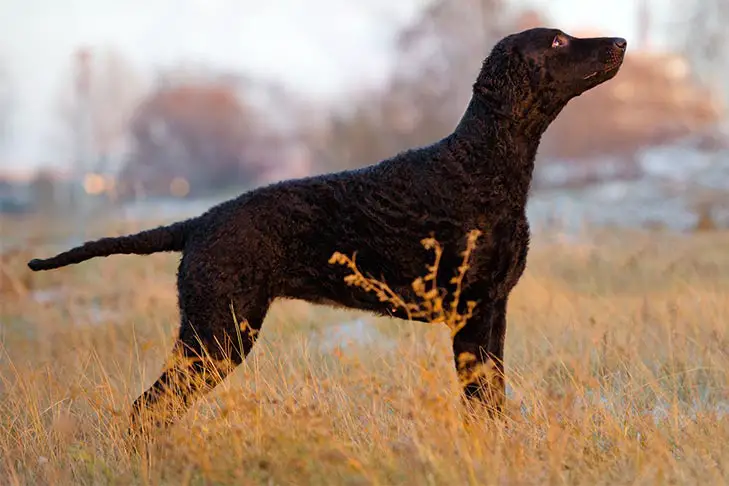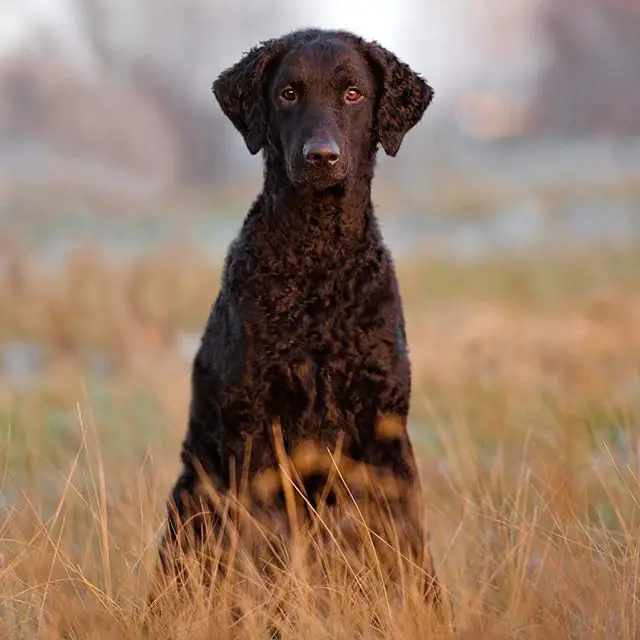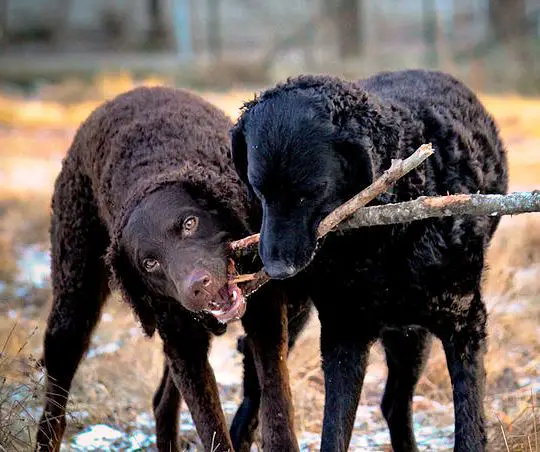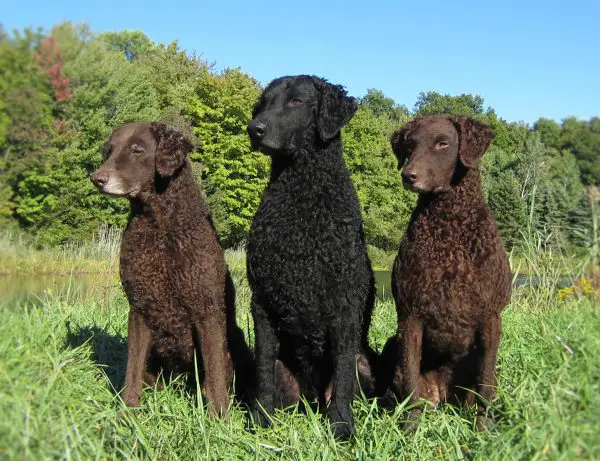The Curly-Coated Retriever is a large, strong, and elegant breed. Its distinctive feature is a liver or black coat with strong curls on the body and smooth hair elsewhere.

The exact history of the Curly Coated Retriever breed is unclear. It is believed to have been bred with many breeds such as Pointing Dogs, including various Retrievers, the Tweed Water Spaniel and the Irish Water Spaniel, and the Poodle to achieve curly coats. This breed was first presented at an exhibition in 1860. She performed well as a hunting dog. However, her popularity as a pet and working dog began to decline after the introduction of the Labrador Retriever.
The Curly-Coated Retriever is a sturdy, confident, courageous dog. She is quite independent and can seem unfriendly to those she doesn’t know. However, with loved ones, this is a loving dog that becomes a calm, devoted companion. This dog loves to be outdoors. She loves to explore the surroundings and find and get something out of the water.

Some of our favorite and most popular breeds are from this group: mostly good-natured, playful, and highly outgoing dogs that make ideal family pets. Through reward-based training, they will quickly fall in love with all family members, including cats. The breed of cop dogs was bred specifically to work throughout the day in all weather conditions. Therefore, they need an active and resilient family that can provide the pet with the necessary physical and mental stimulation.

Like many other breeds, the Curly Coated Retriever can suffer from a variety of inherited eye conditions and hip dysplasia (a condition that can lead to mobility problems). Therefore, it is important to assess the condition of the dog’s eyes and thighs before breeding.
The Curly-Coated Retriever is an active dog. She needs at least two hours of classes a day. He loves to find and bring a game, whether on land or in the water, with the help of water-repellent wool. This dog loves to “work”. Therefore, take a toy that the dog should bring in the game: it will liven up your walks.
Large dog breeds with a high appetite require a different combination of nutrients, including minerals and vitamins, compared to smaller dogs. Curly-Coated Retrievers, like many large breeds, are prone to flatulence and stomach problems. To reduce the risk of such problems, more frequent and fractional meals are recommended.

When thick, curly coats are shedding, brushing with a comb will remove dead hairs. The rest of the time, you should not comb the dog, as this will cause its hair to fluff. Instead, moisturize the coat and massage with your fingers. It is also recommended to trim it slightly every month. Ask the breeder or club for detailed grooming advice.
It is believed that dogs generally get along well with children. However, dogs and children need to learn to get along with each other, respect each other, and feel safe together. In any case, young children should not be left alone with the dog – adults must necessarily control all interactions between them.
